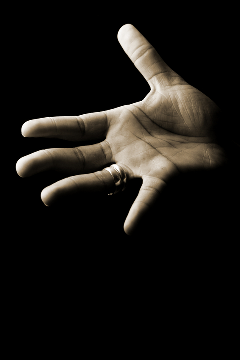
[Second of three opinion pieces by Berner questioning Vancouver's commitment to drug treatment.]
Yesterday, I showed you the mayor of Vancouver's frustrating beliefs about drugs, alcohol, prostitution and addiction. Now, I'll show you mine.
In 1967, by a series of comic accidents, I became the founder and executive director of a residential treatment centre for addicts, alcoholics, ex-cons and others. I was 24 years old. I was playing the saxophone, writing poetry, playing tennis and driving a taxi.
Lester Pearson was the prime minister of Canada. Mr. Pearson created a kind of domestic Peace Corps, modeled after Vista in America. The idea was to engage educated urban youth in the pressing social issues of the day - poverty, crime and the elderly native problems. The program was called The Company of Young Canadians and I was steered in its direction by my late friend Bob Hunter, who only a few years later would become one of the original founders of Greenpeace.
I began by meeting a group of Native Indians in the BC penitentiary. The recidivism rate at that time for aboriginals was dauntingly high and these fellows said they wanted to get out and stay out. They believed the answer lay in having their own halfway house, one that was entirely self-governing and self-financed.
On January 5, 1967, I met a native inmate named Richard, who had served his time and was being released from the pen. He was a killer and I was an underachieving Russian-Jewish Canadian from the North End of Winnipeg. Together we set out to change the world. Ha!
A year later, and with the help of Vancouver City Savings and the Lions' Club, about a dozen of us moved into a house in Fairview Slopes. There were both men and women and most were native, although we had already admitted a few non-native heroin addicts.
Basic rules
The program was simple. Two rules: no chemicals of any kind at any time, no violence or threats of violence. Break the rules and say goodbye. Yes, you could try again tomorrow, but there was no discussion about today; if you broke one of these cardinal rules, you were gone.
The following year, we bought a mansion in Lower Shaughnessy. Now there were 20 and 30 and 40 people, men, women and children. And, although the two rules were still inviolate, the program was no longer simple.
We owned and operated a Shell gas station, a women's beauty salon, a pizza restaurant and a specialties advertising company. Resident members were engaged in almost hectic activity 24 hours a day, nine days a week: seminars, schooling, group therapy, individual counselling, cooking, music making, football, billiards, softball and concerts. Every weekday, recovering addicts spoke openly and passionately about their lives to school kids, churches, business and community groups.
Within four years from our beginnings, the program had grown to over 125 people in residence and a budget in excess of $1 million. The fifth year, we duplicated the program in Winnipeg. That program continues to thrive today in a modified and much expanded version, serving courts, aboriginals, women, children and the original target group of alcoholics, addicts and ex-convicts.
I spent ten years at this work and I saw hundreds of addicts - let me say it again, hundreds - stop using, change their behavior, never return to jail and live significantly new and different lives. The work was, literally, self-help. No doctors, no shrinks, no social workers. In fact, when we were asked about these kinds of professionals, we used to say "Oh, we help them too!"
I never saw a heroin addict take more than 48 hours to kick a habit. I never saw anyone have a fit, swallow their own tongue or walk through walls.
Realistic success rate
Were we able to help everyone? Of course not. Our success rate remained constant at around 25 percent. But there are three important things to remember about that number: 1) According to basic Judeo-Christian belief "If you save one human soul, you save the world!" 2) A batting average of .250 will get you into baseball's hall of fame and a return of 25 cents on the dollar will make you Canada's next billionaire. 3) Our per bed costs were comically low, less than $20,000 per annum, because this was not a "medical model."
This program used the same basic tenets as Alcoholics Anonymous and all of the subsequent 12-step programs. The tone was always tough love. The message was, "You're not sick. You're stupid. Get smart. Make some new and better choices. We know that's easier said than done; but we've done it and we're right here beside you."
My primary interest in the endless addiction debates is treatment, treatment and more treatment. I know from personal experience that treatment is possible and affordable. I have known every mayor of Vancouver for the past 40 years and most British Columbia premiers. Even though treatment is touted as one of the four famous pillars, I have yet to meet one mayor or premier who is prepared to invest in treatment.
Gordon Campbell's highly promoted $8 million for meth treatment is a cruel illusion. Once the money is divided amongst the many health authorities, once the administrators therein are covered and once the advertising and public relations initiatives are paid for, this stunt amounts to a spit in the ocean.
Parents in BC are in tears.
Tomorrow, I will introduce you to some people who, having tried to create treatment options for addicted youth, have been discouraged by unwieldy bureaucracies. ![]()















Tyee Commenting Guidelines
Comments that violate guidelines risk being deleted, and violations may result in a temporary or permanent user ban. Maintain the spirit of good conversation to stay in the discussion.
*Please note The Tyee is not a forum for spreading misinformation about COVID-19, denying its existence or minimizing its risk to public health.
Do:
Do not: